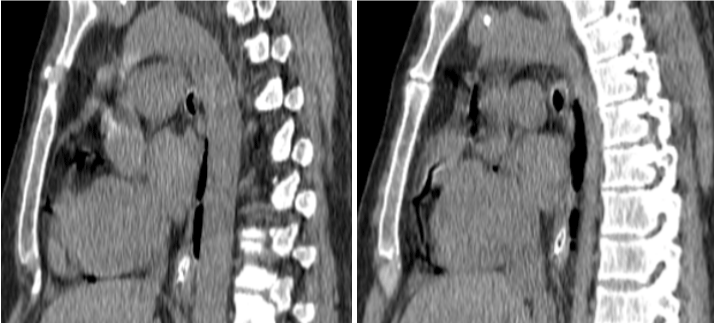
Case Report
Austin J Clin Cardiolog. 2022; 8(3): 1096.
Fatal Coronary Air Embolism during Positive Pressure Ventilation
Zahidi HA*, Badaoui B, Arous S, Bennouna G and Habbal R
Department of Cardiology, IBN ROCHD Casablanca University Hospital, Morocco
*Corresponding author: Zahidi HA, Department of Cardiology, IBN ROCHD Casablanca University Hospital, 8, Rue Lahcen El Arjoun Casablanca 20100, Morocco
Received: September 09, 2022; Accepted: September 20, 2022; Published: September 27, 2022
Clinical Image
We report the case of a 29 years old patient brought to emergency after a road traffic accident. His blood pressure was 138/78 mmHg, pulse 119/min, respiratory rate at 24/min and Glasgow coma scale at 6/15. The patient was put on mechanical ventilation then transferred to the intensive care unit. A body CT scan was performed which found multiple hemorraghic contusions and subarachnoid hemorrhage in the head. Lower right limb x-rays showed a mid diaphyseal femur fracture which then was surgically treated. 7 days after surgery, the patient suddenly developed hypotension, sinus tachycardia and acute respiratory distress. What is the most likely diagnosis at this stage?.
Considering the patient condition, the most likely diagnosis was massive pulmonary embolism. Thorax CT scan was immediately performed which found coronary air embolism in circumflex artery as shown in figure 1. The high sensibility troponin level was 8900 ng/l. Barotrauma has been estimated to occur in 0.5-38% of critically ill patients [1]. Systemic and eventually coronary gas embolism associated with positive pressure ventilation has been considered a rare, but catastrophic complication of mechanical ventilation associated with a high mortality rate.

